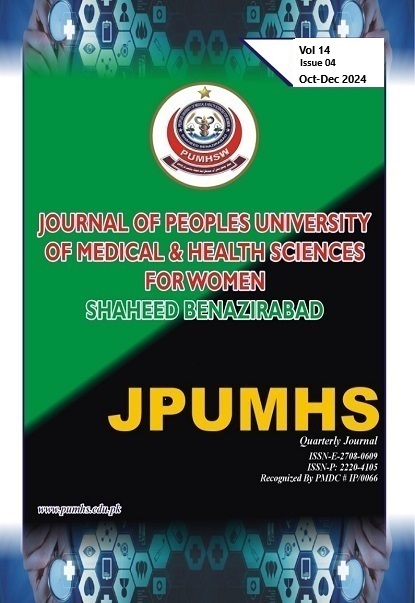THE IMPACT OF FLIPPED CLASSROOM ON ENHANCING PHARMACOLOGY EDUCATION AMONG 3RD-YEAR MBBS STUDENTS.
JPUMHS;2024:14:04,171-175 .http://doi.org/10.46536/jpumhs/2024/14.04.576
Keywords:
Flipped ClassroomAbstract
BACKGROUND: Flipped Classroom FC is a creative academic methodology that shifts
traditional learning standards by having students engage with content outside the classroom,
frequently through web-based sources, and afterward apply this information in dynamic, in
class works out. While the viability of FC has been investigated in different disciplines, its
part in improving pharmacology training in medical colleges remains generally understudied.
OBJECTIVES: This study means to assess the adequacy of the flipped classroom model in
upgrading pharmacological information, decisive reasoning, and clinical application among
third-year MBBS students at Suleman Roshan Medical College Tando Adam. METHODS:
A cohort of 90 third-year MBBS understudies took part in this review. Students were taught
pharmacology through the flipped study hall approach for a semester, with pre-class web
based learning modules followed by interactive in-class exercises. Pre-and post-assessment
scores and surveys on students’ perceptions were utilized to assess the adequacy of the
flipped homeroom. RESULTS: The study showed huge enhancements in pharmacology
information, with a post-evaluation score increase from 68% to 85%. Students reported high
satisfaction with the flipped classroom approach, with 75% of students agreeing that it
upgraded how they might interpret pharmacology and 70% revealing increased engagement.
CONCLUSION: Flipped classroom is an effective teaching strategy for pharmacology
training in MBBS students. It upgrades student’s commitment, encourages dynamic learning,
and further develops clinical critical thinking skills. This approach ought to be coordinated
into the pharmacology educational plan to help further learning and utilization of
pharmacological ideas.
Downloads
Downloads
Published
How to Cite
Issue
Section
License

This work is licensed under a Creative Commons Attribution-NoDerivatives 4.0 International License.




